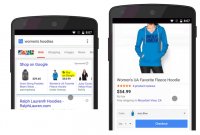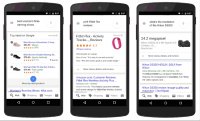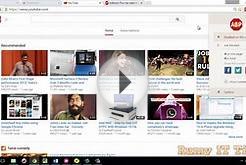 Well, marketers actually have mixed feelings on whether or not this capability is beneficial for, but there’s no use in moping – it’s time to embrace and profit from this new functionality.
Well, marketers actually have mixed feelings on whether or not this capability is beneficial for, but there’s no use in moping – it’s time to embrace and profit from this new functionality.
But, there’s a twist: the buy button is actually not called the buy button, but rather is being referred to as “Purchases on Google, ” and is still in pilot mode for selected global retailers, so don’t jump the gun just yet.
So why buy from the SERPs? Is Google attempting to become a retailer and steal business from shopping brands? Deep breaths, not quite. The main reason Google has decided to release Purchases on Google is because we suck at converting mobile traffic. There’s too many barriers preventing people from buying on-the-go. Think about it, when you’re browsing for a new pair of shoes on the train, are you likely to visit a website, take out your credit card, and type in the information on a tiny screen with a stranger glaring over your shoulder? Probably not. You’re more likely to make the purchase on your laptop when you get home from work or maybe even directly in a store, perhaps with another retailer than the one you originally considered. In fact US retailers’ conversion rates are 2X higher on desktop compared to mobile, according to Google. “We’re working on new solutions to help retailers increase mobile engagement and sales, ” says Google.
You’re more likely to make the purchase on your laptop when you get home from work or maybe even directly in a store, perhaps with another retailer than the one you originally considered. In fact US retailers’ conversion rates are 2X higher on desktop compared to mobile, according to Google. “We’re working on new solutions to help retailers increase mobile engagement and sales, ” says Google.
Are you warming up to the idea yet? Take a look at how this functionality will appear on the search engine results page:
As you can see, these ads will be tagged “Buy on Google.” When clicked on, the searcher will be taken to a retail-branded product page, hosted by Google, where they’re able to checkout with the click of a button. Retailers will fulfill the orders as normal and provide any customer service follow-up. The shopper will only have to enter payment credentials upon their first purchase, and going forward these will be saved to their account making the checkout process “seamless, simple, and secure.”
 Google is also encouraging shoppers to use shopping apps through deep links, which drive shoppers right to their apps as opposed to their website. EBay, Flipkart and Zalando are now testing this functionality. “This is a tremendous new opportunity for retailers and app developers to drive engagement with their shopping apps, and we’ll be expanding it to more advertisers in the coming months, ” says Google.
Google is also encouraging shoppers to use shopping apps through deep links, which drive shoppers right to their apps as opposed to their website. EBay, Flipkart and Zalando are now testing this functionality. “This is a tremendous new opportunity for retailers and app developers to drive engagement with their shopping apps, and we’ll be expanding it to more advertisers in the coming months, ” says Google.
Expanded Ads when Swiping through the Carousel
Since Google has found that on mobile swiping is big (shocker!), with 1 in 5 people swiping to interact with shopping ads, they’ve released new functionality where the ad is made slightly larger as you swipe. This larger view reveals additional information about the product such as ratings, availability, etc.
Newly Designed Shopping Ads and Product Review Cards for Voice Search
More and more people are speaking into their phones to make purchasing decisions while on-the-go. You and I both know that product reviews are important. We check reviews before going to a new restaurant, purchasing our next beach read, and buying a new outfit to make sure the fit is right. Google’s started rolling out ads with authoritative rankings and product reviews for these conversational searches, and they’ve already seen a click-through-rate increase of 11% with these new formats. Google is also showing product review cards to provide additional product ratings and tidbits of information to better inform the purchasing decision.









